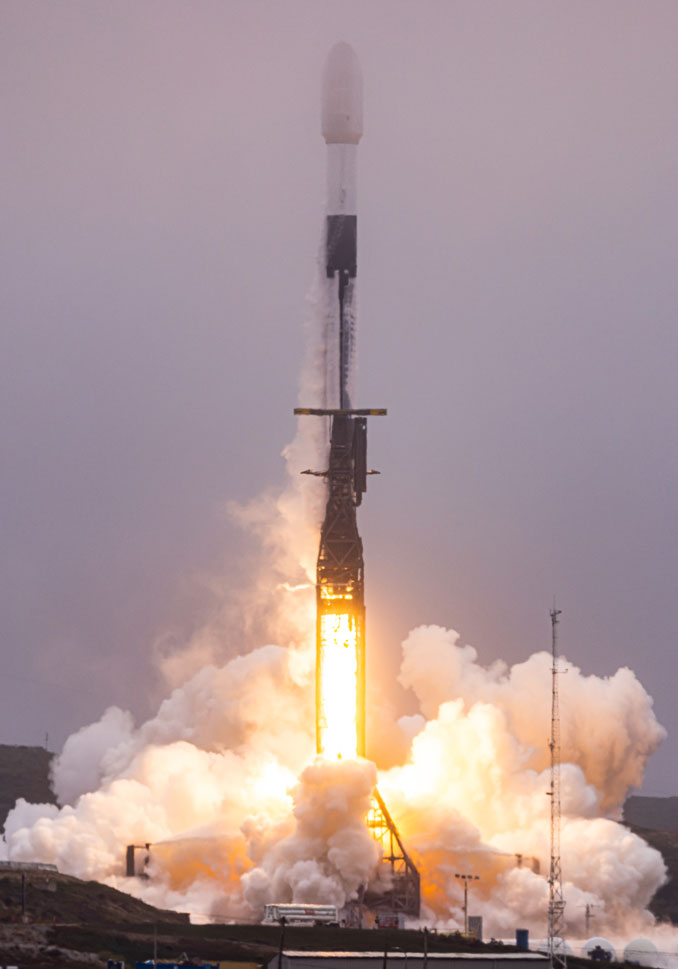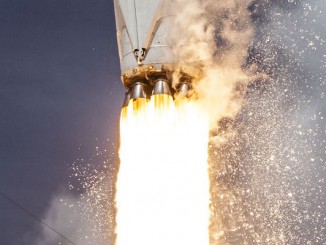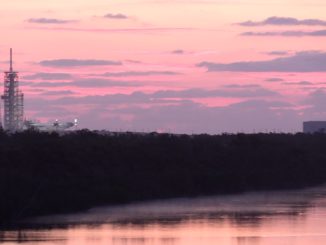SpaceX lofted another batch of Starlink internet satellites into orbit on Friday from Vandenberg Space Force Base in California. A Falcon 9, carrying 48 satellites inside its payload fairing, lifted off at 12:29:50 p.m. PDT (3:29:50 p.m. EDT; 1929:50 UTC) from Space Launch Complex 4-East.

It was the 12th flight for the first stage, which carries the tail number B1063. It previously launched Sentinel-6 Michael Freilich, DART, Transporter-7 and seven Starlink missions. The booster most recently flew 48 days ago on May 20, carrying satellites for OneWeb & Iridium.
The Falcon 9 pitched on to a southeasterly trajectory aiming for an orbit inclined 43 degrees to the Equator. It was only the second time a SpaceX had targeted this orbit from Vandenberg. Typically launches from Vandenberg head south to polar orbits. A dog-leg maneuver was performed by the second-stage so the rocket could avoid flying over populated areas on the West coast.
After separating from the second stage, the first stage booster arced downrange and touched down on the SpaceX drone ship ‘Of Course I Still Love You’ in the Pacific Ocean nearly nine minutes after liftoff. It was the 205th booster recovery and SpaceX’s 131st successful recovery in a row.
About 19 minutes into flight the Starlink satellites separated from the Falcon 9 second stage into a 209×142 mile (337×229 km) orbit. However, it was nearly two hours after liftoff before SpaceX confirmed the satellites had successfully deployed into orbit.
According to statistics compiled by Jonathan McDowell, an astronomer and widely-respected expert on spaceflight activity, this mission, designated Starlink 5-13, brings the total number of Starlink spacecraft launched to 4,746, and the number of Starlink satellites currently in orbit to 4,413. It was the 91st SpaceX launch primarily dedicated to deploying the Starlink network.
SpaceX will follow Friday’s launch with another Falcon 9 flight on Sunday — this time from Cape Canaveral, Florida. A Falcon 9, using a booster making a record-breaking 16th flight, will liftoff from Space Launch Complex 40 at 4:36 a.m. EDT (0836 UTC) carrying 22 second-generation “mini” Starlinks.
The Starlink fleet is the largest constellation of satellites in orbit, with nearly seven times as many spacecraft in orbit than OneWeb, which has the second-largest fleet of satellites providing global internet service.
SpaceX has regulatory approval for thousands more satellites to continue expanding the capacity and reach of the Starlink internet network.



